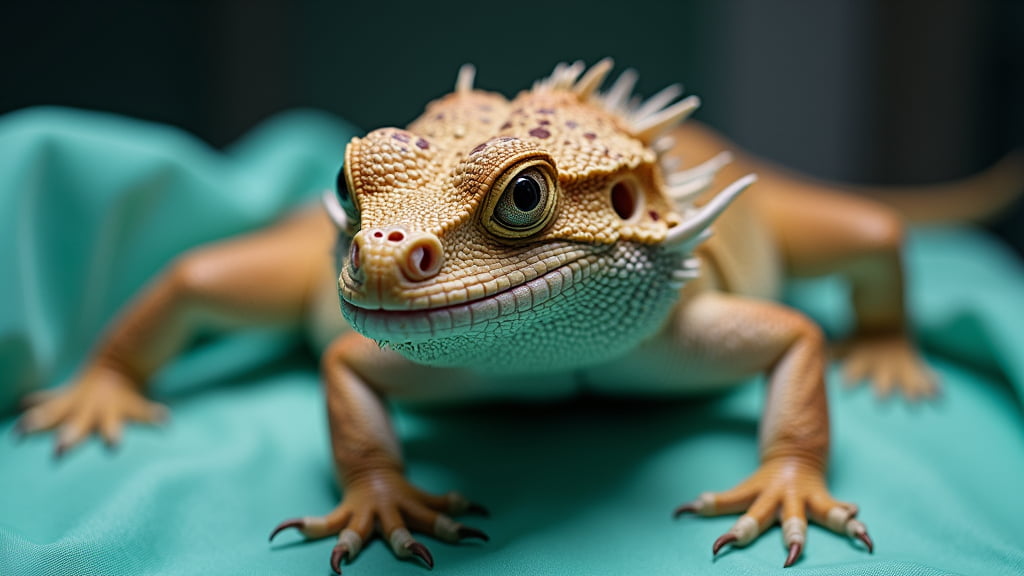If you’re a bearded dragon owner, the thought of your scaly friend needing surgery might be quite daunting. However, arming yourself with knowledge about the process can go a long way in easing those concerns. In this post, we’ll explore everything from the reasons your bearded dragon might need surgery to the recovery process, ensuring your reptile gets back to basking in the sun as soon as possible.
Why Might a Bearded Dragon Need Surgery?
Just like other pets, bearded dragons can face health issues that may require surgical intervention. Surgery could be necessary for several reasons, which we’ll cover below.
Common Reasons for Surgery
Tumours and Growths
One of the more common reasons that might lead to surgery is the presence of tumours or abnormal growths. While these can sometimes be benign, they might require surgical removal to ensure they do not impede your beardie’s quality of life.
Impaction
Impaction is a severe condition where a bearded dragon’s digestive system becomes clogged, often due to ingesting substrate or large pieces of food. In extreme cases, surgery might be the only viable solution to remove the blockage.
Internal Injuries
Accidents can happen, even to the best-cared-for pets. Whether through a fall or an altercation with another animal, internal injuries might require surgical intervention to repair.
Preparing for Bearded Dragon Surgery
Once it’s determined that your bearded dragon requires surgery, proper preparation is vital. Let’s take a look at what steps you should follow.
Choosing the Right Veterinarian
Reptile Specialist
Not all vets have extensive experience with reptiles, so it’s important to entrust your bearded dragon’s care to a veterinarian who specialises in exotic pets. These professionals are better equipped to handle the unique anatomy and needs of reptiles.
Consultations and Second Opinions
It’s always wise to seek a second opinion before proceeding with surgery, particularly for serious conditions. This ensures that surgery is indeed the best course of action for your pet.
Pre-Surgery Health Check
Your vet will likely perform a series of pre-surgery checks to ensure your beardie is in good health for the procedure. This might include blood tests and imaging scans to get a complete picture of their internal health.
Preparing the Habitat
You’ll need to prepare your beardie’s enclosure for a recovery period which involves:
- Cleaning the tank thoroughly to minimise infection risks.
- Removing any loose substrate that could complicate the wound.
- Setting up a quarantine area if you have other pets.
The Surgery Process
Understanding what happens during the surgery can make the process less intimidating.
Anaesthesia
Your bearded dragon will be put under anaesthesia to ensure they are comfortable during the operation. Reptile anaesthesia is slightly different from that used for mammals, and a skilled vet will monitor your pet closely to prevent complications.
The Surgical Procedure
The details of the surgery will depend on the specific condition being treated. Whether it’s removing a tumour or relieving an impaction, the vet will utilise specialised tools and techniques to perform the operation efficiently and safely.
Post-Surgery Monitoring
Right after the surgery, your beardie will be monitored closely by the vet team. This period is crucial for ensuring that they recover from anaesthesia and that there are no immediate complications.
Recovery and Aftercare
The recovery process is critical for your bearded dragon’s long-term health.
Immediate Post-Surgery Care
Temperature and Humidity Control
Proper heating and humidity levels are vital during recovery. Keep the enclosure at the appropriate temperature and ensure that humidity is controlled to prevent respiratory issues.
Limited Mobility
For the first few days, limit your bearded dragon’s mobility to prevent unnecessary strain on the surgical site. You may need to invest in a smaller enclosure temporarily.
Medication and Supplements
Your vet will likely prescribe pain relief and possibly antibiotics to prevent infection. It’s important to administer these exactly as prescribed to aid recovery.
Long-Term Recovery Tips
Nutrition
A balanced diet rich in essential nutrients is crucial during recovery. Consider offering softer foods that are easy for your beardie to digest and fortify their diet with calcium and vitamins.
Monitoring for Complications
Keep a close eye on the surgical site for signs of infection, such as swelling or discharge. Any concerns should be immediately discussed with your vet.
Regular Vet Check-Ups
Follow-up visits to the vet are essential to monitor progress and address any complications promptly. Regular check-ups will ensure that your pet is healing well and provide you with peace of mind.
Conclusion
Surgery can be a stressful experience for both you and your bearded dragon, but with the right preparation and care, you can ensure a smooth recovery. Always consult a qualified vet for any health concerns and follow their advice closely. Remember, the well-being of your scaly friend is paramount, and taking the proper steps can help them return to their happy, healthy self in no time.
By staying informed about bearded dragon surgery and recovery, you can be a more proactive and effective pet owner. If you have further questions, don’t hesitate to consult resources like Reptile Forums UK or Exotic Pet Vets for additional guidance.

